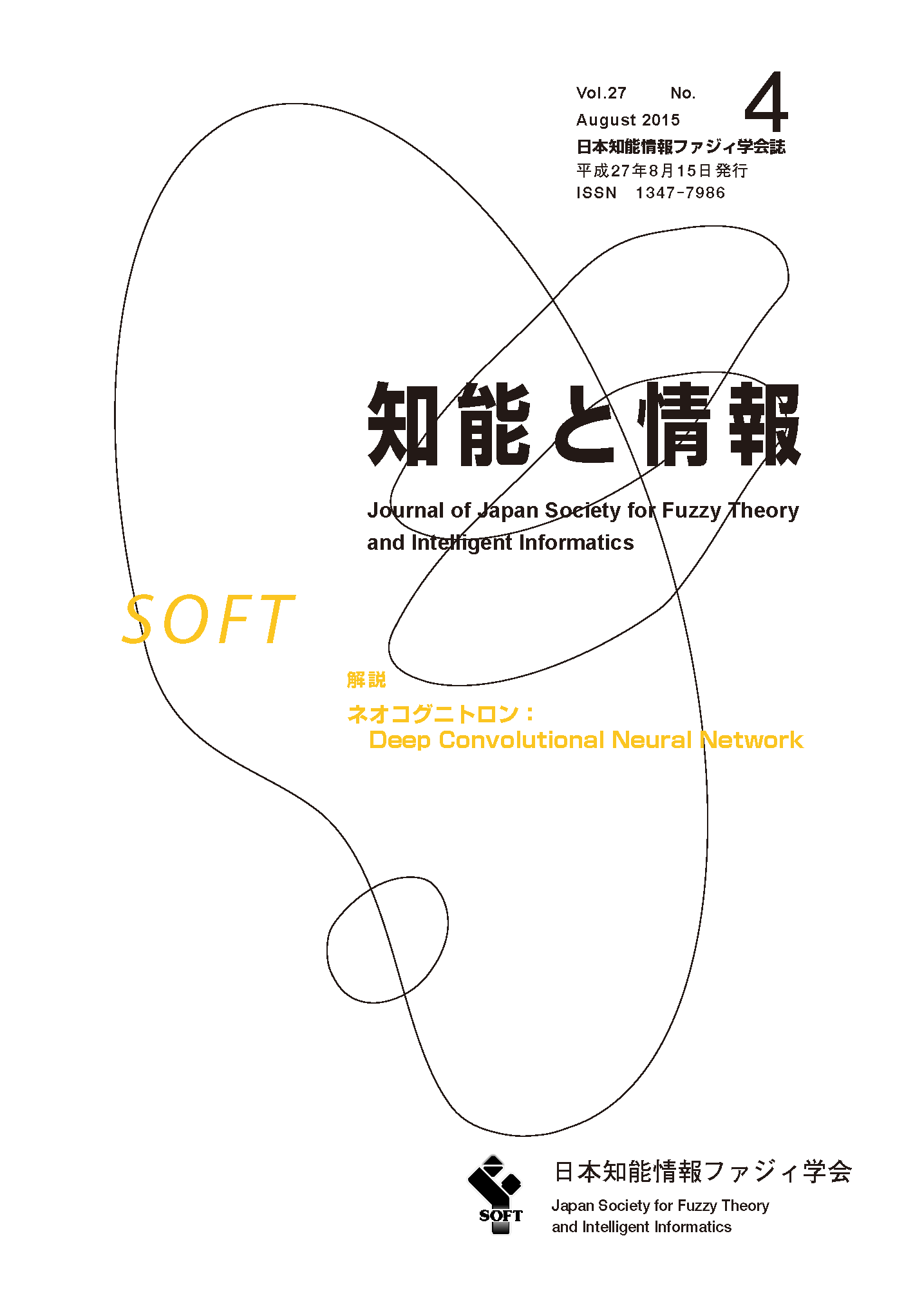Volume 27, Issue 4
Displaying 1-16 of 16 articles from this issue
- |<
- <
- 1
- >
- >|
-
2015Volume 27Issue 4 Pages toc-
Published: August 15, 2015
Released on J-STAGE: November 18, 2017
Download PDF (51K)
-
2015Volume 27Issue 4 Pages 113
Published: August 15, 2015
Released on J-STAGE: November 18, 2017
Download PDF (126K)
-
2015Volume 27Issue 4 Pages 114
Published: August 15, 2015
Released on J-STAGE: November 18, 2017
Download PDF (146K)
-
2015Volume 27Issue 4 Pages 115-125
Published: August 15, 2015
Released on J-STAGE: November 18, 2017
Download PDF (1107K)
-
2015Volume 27Issue 4 Pages 126-127
Published: August 15, 2015
Released on J-STAGE: November 18, 2017
Download PDF (543K)
-
2015Volume 27Issue 4 Pages 128
Published: August 15, 2015
Released on J-STAGE: November 18, 2017
Download PDF (130K) -
2015Volume 27Issue 4 Pages 128
Published: August 15, 2015
Released on J-STAGE: November 18, 2017
Download PDF (130K)
-
2015Volume 27Issue 4 Pages 129-137
Published: August 15, 2015
Released on J-STAGE: November 18, 2017
Download PDF (299K)
-
2015Volume 27Issue 4 Pages 138-140
Published: August 15, 2015
Released on J-STAGE: November 18, 2017
Download PDF (187K)
-
2015Volume 27Issue 4 Pages 141
Published: August 15, 2015
Released on J-STAGE: November 18, 2017
Download PDF (42K)
-
2015Volume 27Issue 4 Pages 142
Published: August 15, 2015
Released on J-STAGE: November 18, 2017
Download PDF (118K)
Regular
Original Papers
-
2015Volume 27Issue 4 Pages 651-668
Published: August 15, 2015
Released on J-STAGE: September 08, 2015
Download PDF (3267K) -
2015Volume 27Issue 4 Pages 669-679
Published: August 15, 2015
Released on J-STAGE: September 08, 2015
Download PDF (817K) -
2015Volume 27Issue 4 Pages 680-690
Published: August 15, 2015
Released on J-STAGE: September 08, 2015
Download PDF (1414K)
Short Notes
-
2015Volume 27Issue 4 Pages 691-694
Published: August 15, 2015
Released on J-STAGE: September 08, 2015
Download PDF (876K) -
2015Volume 27Issue 4 Pages 695-699
Published: August 15, 2015
Released on J-STAGE: September 08, 2015
Download PDF (413K)
- |<
- <
- 1
- >
- >|
